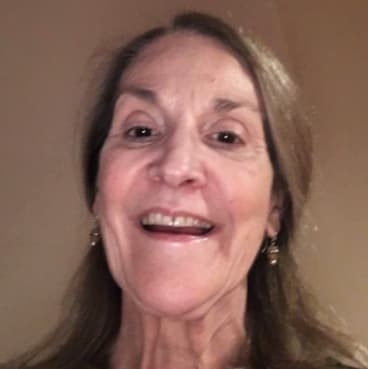Advertisement
Review
Lyric Stage Brings Finesse And Warmth To A Small-Scale 'Pacific Overtures'
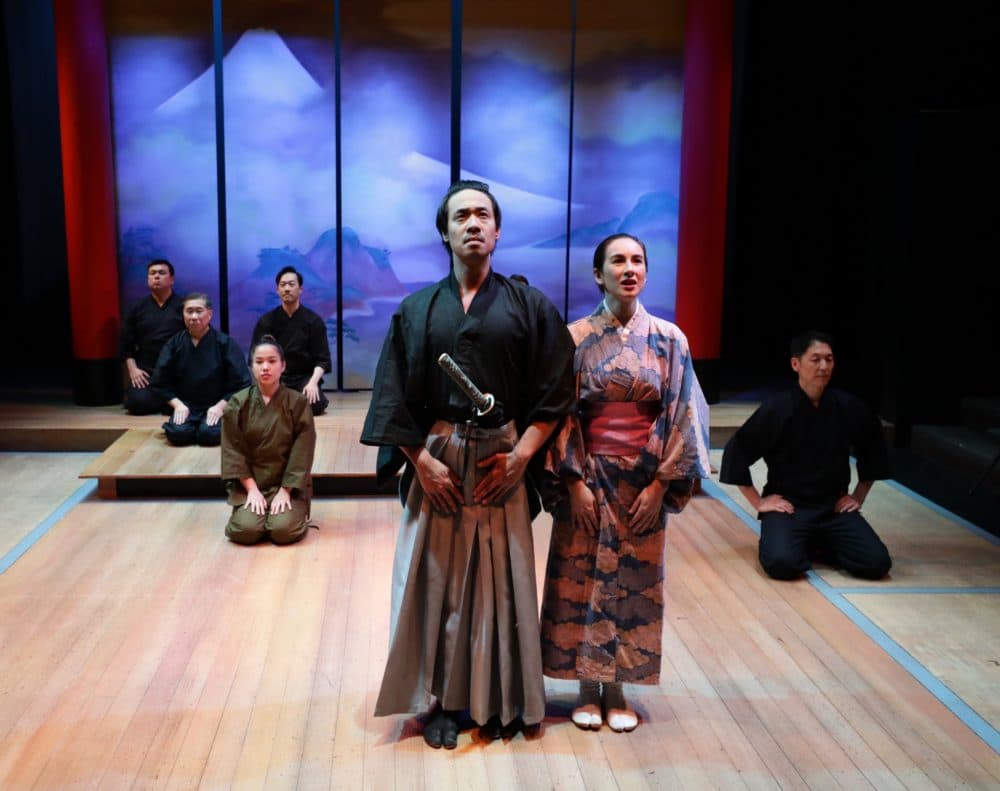
When it premiered on Broadway in 1976, “Pacific Overtures” was an East-meets-West spectacle. Well, make that an East-fails-to-fend-off-West spectacle. But in the ensuing 43 years, the spectacle bar has been upped while, especially in the Trump era, bullying American foreign policy has come under vigorous, oft-horrified scrutiny.
All of which sets the stage for the intimate yet pointed Lyric Stage Company revival of Stephen Sondheim and John Weidman’s musical about what used to be unabashedly called "gunboat diplomacy" — in this case the 1853 American intrusion on Japan, a nation that at the time had been off limits to foreigners for 250 years. The pleasing if cautionary staging, which licks any hint of dryness from the material, is director Spiro Veloudos’ 10th Sondheim outing in 20 years. Continuing through June 16, it is intended as a bookend to the cycle that began in the 1998-’99 season with “Assassins.”
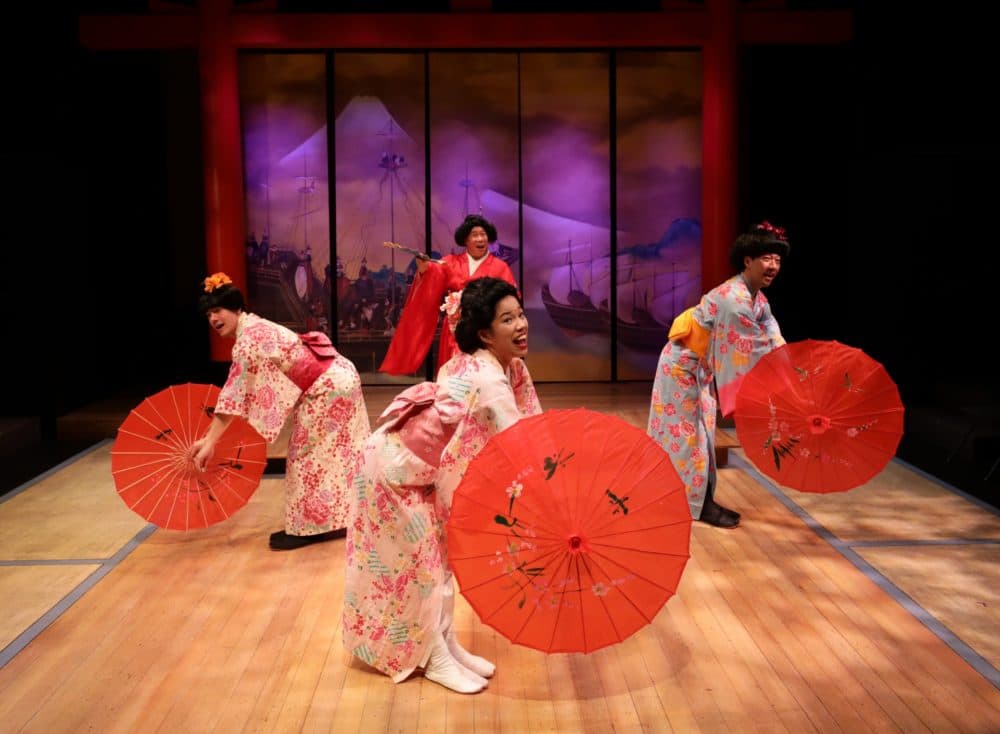
“Pacific Overtures,” with its meticulous melding of Japanese and Broadway musical styles, boasts what some consider Sondheim’s most sophisticated score. But the difficult show takes as its subject not a personal story but a historical event: Commodore Matthew Perry’s crashing arrival on the shores of the Floating Kingdom brandishing a letter from President Millard Fillmore, four warships and a very big stick. The musical chronicles Japan’s wily resistance followed by its inevitable capitulation — not from the viewpoint of the Americans, bearing their gifts and guns, but of the Japanese, whose culture was overridden even as it went on to beat the West at many of its own industrial and marketing games.
But whereas the original production borrowed lavishly from Kabuki and other stylized Asian art forms, the Lyric deploys an Asian cast and a mix of largely unaffected American and Japanese theatrics to put an emotional veneer on what the show’s creators conceived as a respectfully — and lavishly — stylized history lesson. Despite the august reputations of both Sondheim and director Harold Prince, said tutorial drew mixed critical and audience response. Since then, "Pacific Overtures" has been something of a wallflower among Sondheim musicals despite its ravishing and intricate score: a Japanese-influenced mix of agitated underpinnings and swelling if dissonant melody overseen here by Veloudos’ right-hand music director, Jonathan Goldberg.
As much as I admired the more sumptuous 2003 North Shore Music Theatre staging of “Pacific Overtures” (from which many spectators fled at intermission, presumably because they found the show remote), I was equally charmed by the Lyric production. In the smaller setting, one catches every clever, complicated lyric. Moreover, the actors bring warmth as well as reserve to the show’s fan- and sword-brandishing Japanese characters. These include Kayama, a samurai “of little consequence” turned reluctant state official, and Manjiro, a shipwrecked fisherman who somehow washed up in Massachusetts and therefore knows how to fight belligerence with belligerence. These two, from radically different classes, develop an unlikely friendship while working to thwart the American invasion but wind up at separate, surprising ends of the assimilation stick.
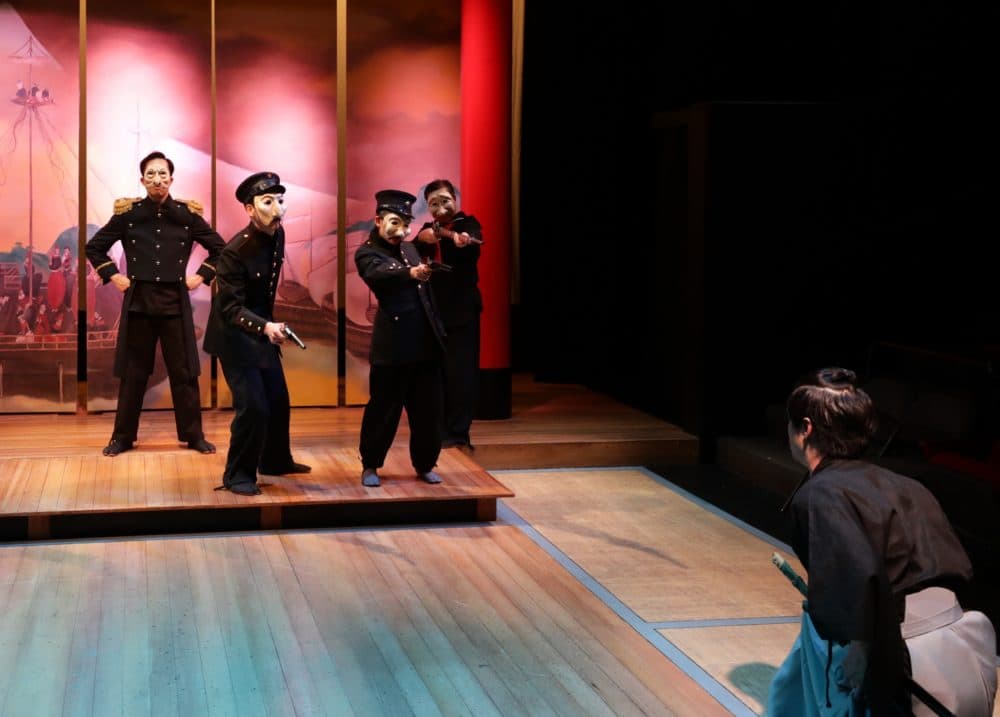
At the center of the culture-clashing swirl is a narrator, called the Reciter and usually played by a man. (In the original production, in keeping with Kabuki casting, men played all of the roles until the final number, a driving paean to Japan’s rapid Westernization.) Here women and men play various, non-gender-restricted roles, from admirals to geishas to ordinary citizens witnessing history. And the Reciter is the terrific Lisa Yuen, who has gorgeous pipes and a delicious way with pith and irony, especially when expressed in haiku. She also slips into other roles, including that of an ineffectual Shogun who seems a bit bored with being poisoned.
Veloudos and choreographer Micheline Wu have done an elegant if also tongue-in-cheek job of mixing Asian and showbiz styles, just as the music does. Wu, who is trained in Chinese dance, also plays Tamate, Kayama’s tradition-bound, kimono-clad wife, imbuing the unfortunate character with intensity and grace, the latter exemplified by her fluid dance with a fluttering fan.
By contrast, the American “barbarians,” and later a lecherous trio of British sailors and a quintet of nimbly badgering admirals, are treated with the crudeness they arguably deserve, their faces hidden behind coarse white-toned masks designed by Brynna Bloomfeld. With their cornpone accents and kowtowing to command, the Americans seem almost silly. But that effect is utterly erased by the menacingly athletic, triumphant lion dance appropriated at the end of Act 1 by Kai Chao as Commodore Perry.
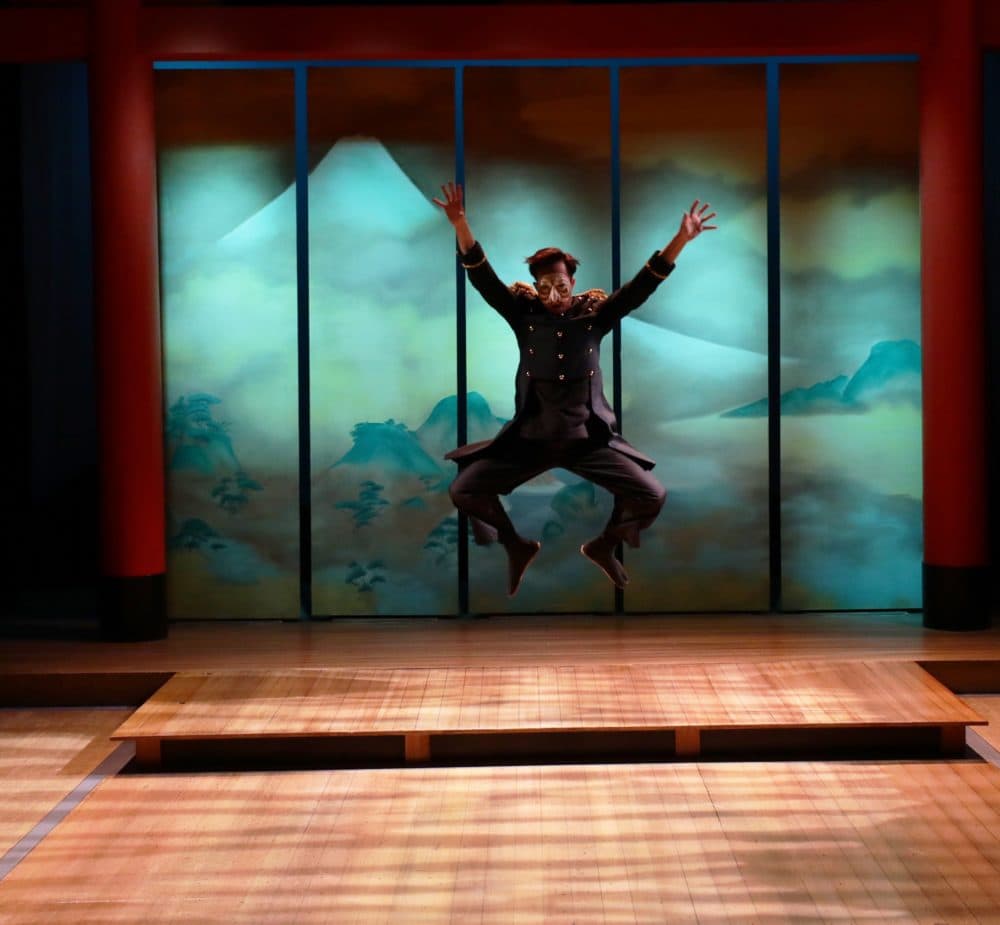
Janie E. Howland’s simple, pretty set, overhung by a couple of cherry-blossom-laden branches, does a neat trick when its series of Japanese screens reverse themselves, changing the scene from pastel-hued nature to the looming warships described in song as “Four Black Dragons.” And Gail Astrid Buckley’s costumes range from the utilitarian (black pants and tunics) to the strikingly vivid (a shimmering red kimono for a bashful trio of geishas’ Madam).
Among the ensemble, Carl Hsu brings a rueful dignity (even when the character is terrified) to Kayama, the samurai whose capitulation to foreign influence culminates in that regret-laden catalogue of Western accessories, “A Bowler Hat.” He and Sam Hamashima, as Manjiro, turn a companionable walk into a lyrical dual on the rhythmic “Poems.” Gary Thomas Ng, portraying the Shogun’s ruthlessly pragmatic mother, hasn’t the strongest voice in the cast, but his clipped delivery of every jumpy lyric in “Chrysanthemum Tea” is exemplary.
Jeff Song is an authoritative yet sensitive Lord Abe, the overwhelmed official stuck making decisions for the largely ceremonial Emperor and largely absent Shogun. And Brandon Milardo, Ng and Karina Wen form the harmonic trio spying on history in “Someone in a Tree.” That number, reportedly the composer’s favorite of his tunes, is surely among the most breathtaking of Sondheim’s sonorous accomplishments. And that’s saying something.
The Lyric Stage Company's production of "Pacific Overtures" continues through June 16.
Correction: An earlier version of this post incorrectly identified the racial makeup of the cast. The post has been updated.
